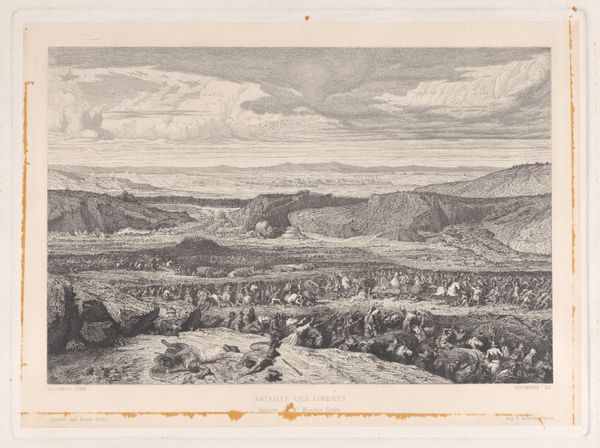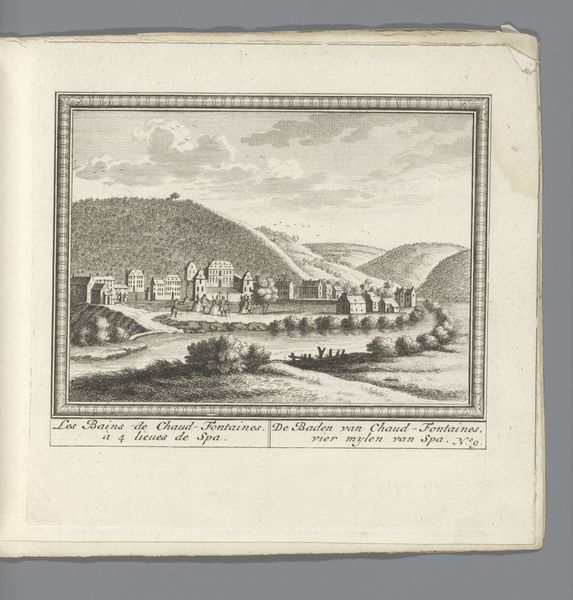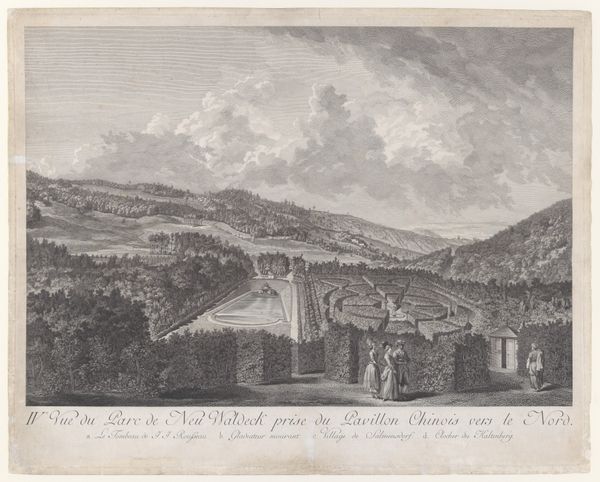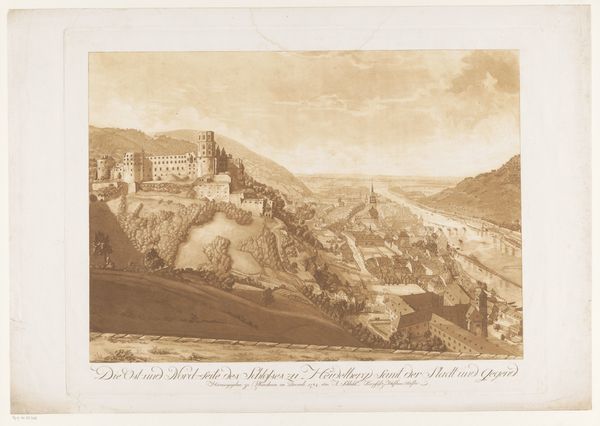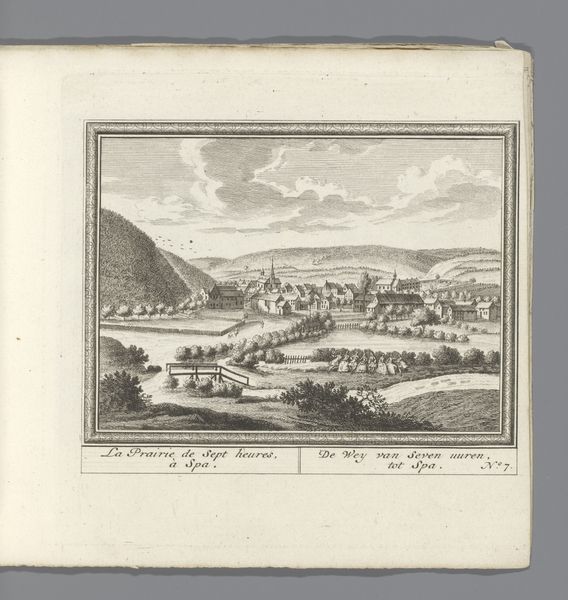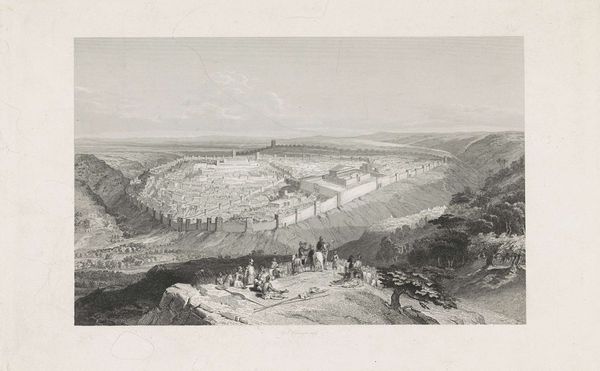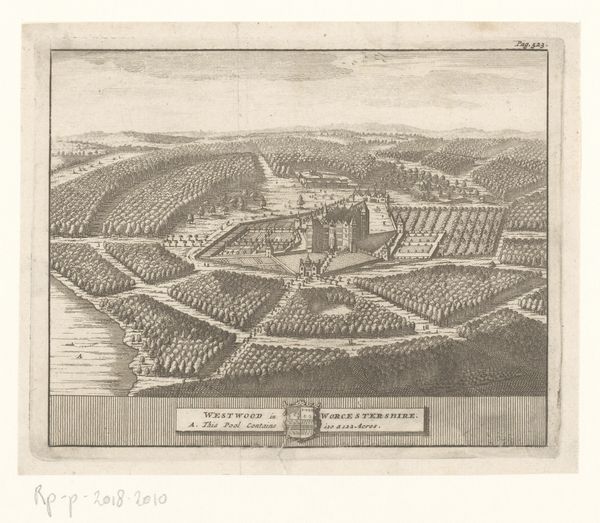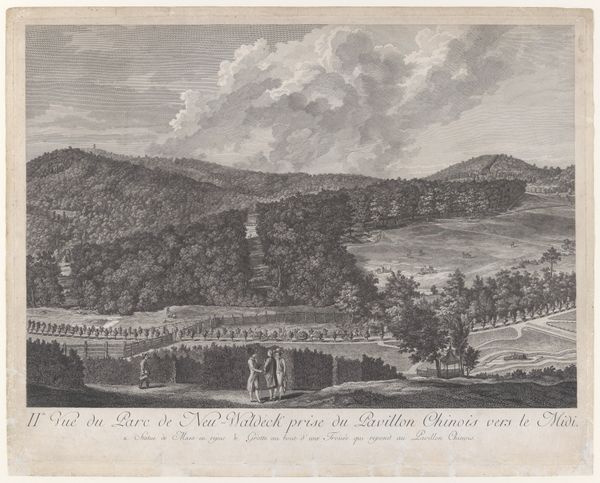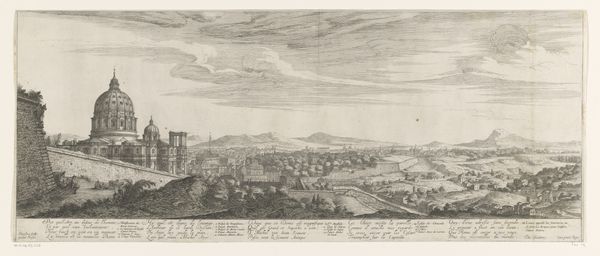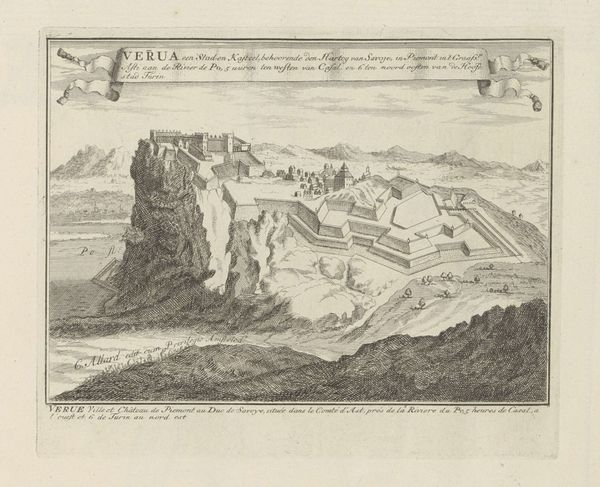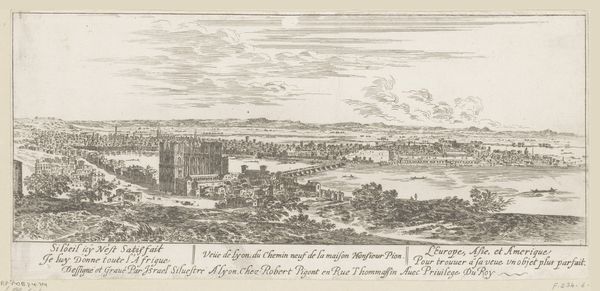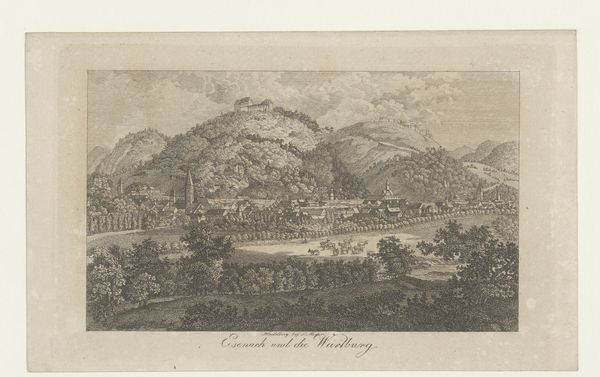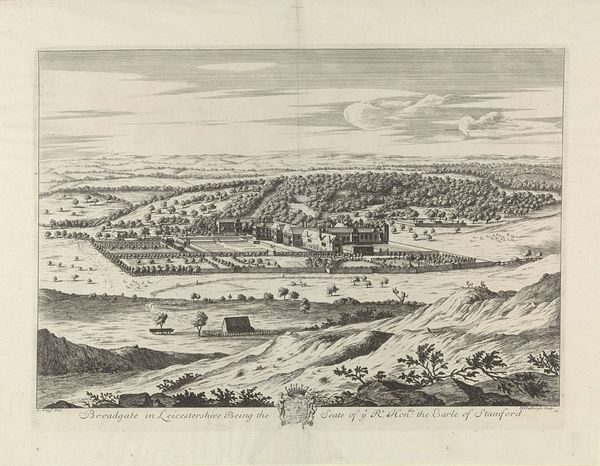
IIIe Vue du Parc de Neu-Waldeck prise du Pavillon Chinois vers le Couchant, from Views of the Park and Gardens of Marshal Count de Lacy at Neu-waldegg 1782
0:00
0:00
drawing, print, etching
#
drawing
#
neoclacissism
# print
#
etching
#
landscape
#
etching
#
history-painting
Dimensions: sheet: 20 9/16 x 25 3/4 in. (52.2 x 65.4 cm) plate: 20 3/16 x 25 3/8 in. (51.2 x 64.5 cm)
Copyright: Public Domain
Curator: Here we have "IIIe Vue du Parc de Neu-Waldeck prise du Pavillon Chinois vers le Couchant," a 1782 etching by Jakob Matthias Schmutzer, currently residing at the Metropolitan Museum. Editor: Oh, a classical garden dream! It’s all neatly ordered and a bit…melancholy. Even with the little figures down front, it feels strangely deserted. Curator: Yes, these landscapes often functioned as symbols of control, both over nature and society. The precisely laid out gardens, the distant, manicured woods… Editor: It’s interesting you say “control,” because it also strikes me as yearning. Longing for an idealized past. Like someone built their memories, rather than a functional park. Curator: You are perceptive. Neoclassicism always looks back, drawing on antique forms to establish a visual and ideological authority. Consider the implications of staging these historical “views”. Editor: The vanishing point way off in the distance, those lines are powerful, leading the eye—and thought. Even this etching itself becomes a symbol, reproducing and thus reinforcing a certain way of seeing. Curator: Precisely! And that so-called Chinese Pavilion—merely suggested—a fashionable exoticism deployed for visual effect, fitting within the overarching framework of order. Editor: Exoticism reduced to stage dressing! And these miniature people standing stiffly, almost like game pieces… their world is curated just like the scene before them. I get a definite sense of performance. Curator: Indeed. What appears natural is carefully constructed. It’s history-painting, but using landscape itself to convey a political and social message. Even these etchings play a role in projecting power, shaping an aristocratic "gaze". Editor: Funny, that a calm park view can have so many complicated shadows. Seeing this I am both calmed and deeply unsettled. Curator: A productive tension, wouldn't you say? Art holding a mirror to human intentions. Editor: Absolutely. Leaving me wondering who builds these paradises… and for whom.
Comments
No comments
Be the first to comment and join the conversation on the ultimate creative platform.

